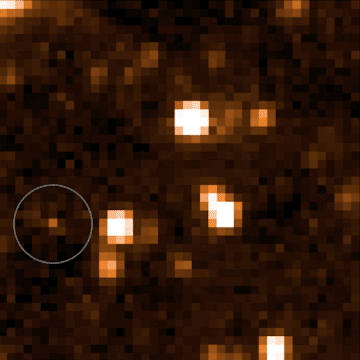The object known as “Tai Nạn” (meaning “Accident”) is located somewhere between a gigantic planetary state and a failed star, identified to be around 13 billion years old, meaning it has existed in our galaxy since its early days.
“Tai Nạn” – “Accident” is the peculiar nickname given by NASA to the brown dwarf WISE 1534 – 1043, which is currently only 50 light-years away from Earth and continues to hurtle through space at a speed of half a million miles per hour, according to the Daily Mail.
A brown dwarf is neither a star nor a planet; rather, it is “stuck” between the states of a star and a planet.

Graphic illustration of the brown dwarf “Tai Nạn” – (Image: NASA/Caltech).
It resembles a gigantic gas planet (like Jupiter), but is larger, more energetic, and possesses many capabilities that planets lack. However, it is somewhat small by star standards, lacking the size necessary to ignite hydrogen—the essential characteristic of a star.
Thus, brown dwarfs are considered a form of “failed” star or a “sub-planet” that is more advanced than a planet. This object is also not formed in the same way as other planets: it has no parent star and wanders aimlessly through the universe. Astronomers believe that it was almost born from “nothing”: accumulating from molecular clouds in an incomplete manner.
In this recent study, scientists from the California Institute of Technology and NASA analyzed the brown dwarf discovered by an amateur astronomer, based on online data from the NEOWISE infrared telescope network, and found that it does not resemble any previously discovered brown dwarfs. The researchers also utilized the W.M. Keck Observatory in Hawaii, along with the Hubble and Spitzer space telescopes, to observe the object.

Animation capturing the moment the brown dwarf speeds past other objects – (Image: NASA).
It is “tearing through” space in the Milky Way galaxy at its terrifying speed, revealing that it is very ancient—up to 13 billion years old, meaning it has been present in our galaxy since its earliest days.
According to Dr. Davi Kirpatrich, studying this object may help uncover many mysteries of the Milky Way, as it formed when the galaxy was still in its infancy, implying a distinct chemical composition compared to other objects.
They estimate that many other ancient brown dwarfs are lurking in the dark regions of the galaxy.
The study was recently published in the scientific journal Astrophysical Journal Letters.





















































